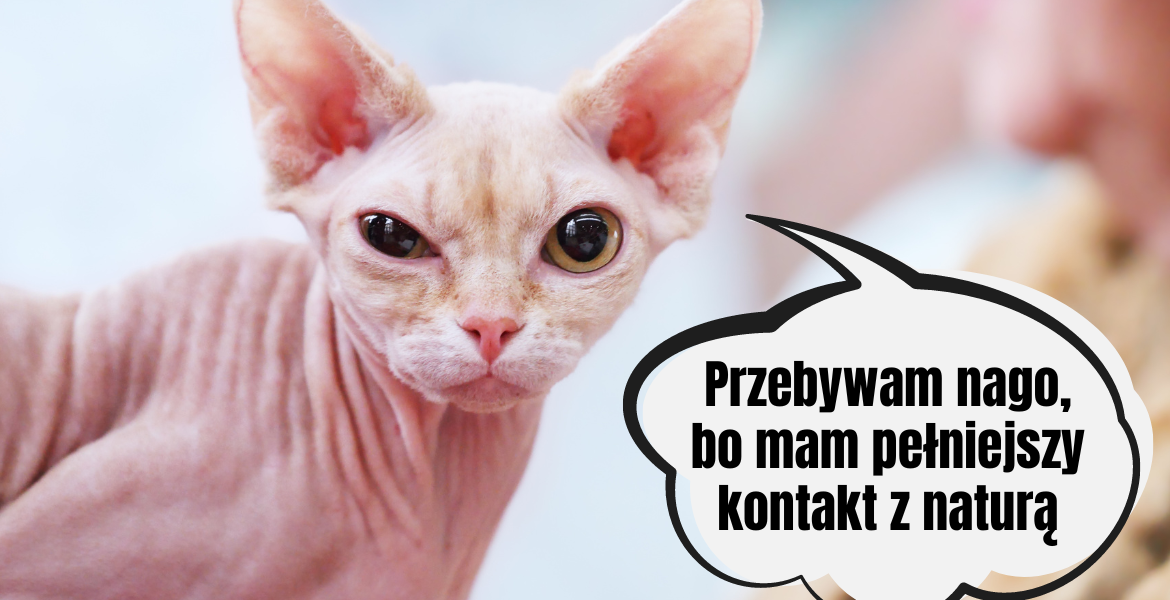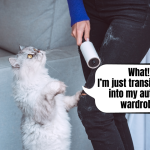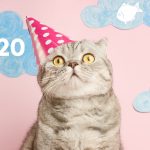A bald cat? Now that’s a story! Hairless cats, such as Canadian Sphynxes, Peterbalds, Donskoy Cats, and Elf Cats, definitely stand out from their furry relatives. Although they may resemble aliens or plucked chickens in appearance, their behavior undoubtedly proves that pure feline blood flows within them. Today on the blog, we’re exploring what lies beneath the surface of hairless cats and why they captivate so many purr lovers. Let’s dive into the topic, fabCats!
A cat without fur? Why not!
Every cat owner knows the struggle of living among furballs—fluff appears in our coffee, and on our clothes, and when the kitty decides to vanish in a flash, they scatter it all over the apartment. Well, almost every owner 🙂 Those who don’t want to deal with the furry reality often turn their attention to hairless cats, which don’t have much to lose. Their skin is usually covered with a delicate fuzz resembling peach skin, but apart from that, actual fur is a rarity. As Carers of both short- and long-haired cats, we must admit—it’s definitely a big bonus! However, we also know that the lack of fur doesn’t mean a lack of responsibilities regarding cat care.
The skin of hairless cats is much more exposed to external factors than the skin of fur-covered cats. These “non-furries” get cold faster (so they can benefit from clothes and efficient heaters in winter), they can get sunburnt in summer if they lie in the sun for too long, and their skin quickly collects dirt and pollutants due to sebum accumulation on the surface, thus requiring regular grooming. Baths and/or wiping with damp cloths are entirely normal for these cats. Sphinx caretakers also shouldn’t forget about ear care—not only are their ears quite large, but they’re also not protected by any fur, so special attention should be paid to their regular cleaning and checking by a veterinarian.
Among the naked cats: get to know hairless cat breeds
Canadian Sphynxes are the most popular breed among cats lacking traditional fur. Their skin, covered with a thin layer of fuzz, surprises anyone who encounters a hairless cat for the first time and expects them to be completely smooth. If you have the chance, we recommend touching such a cat at least once in your life! However, what their caretakers value most isn’t their appearance but their character—they’re very social cats, strongly attached to humans, and can’t stand loneliness. They’re the type of cat that will always be eager to help with household chores. But how do other hairless cats compare? Let’s find out!
Peterbalds, or Petersburg Sphynxes. Although they carry “sphynx” in their name, they are not related to Canadian Sphynxes. They are a completely separate cat breed, characterized by the complete lack of fur. They are slender, well-muscled cats, extremely active, curious, and always ready to play. Having a Peterbald at home, you certainly won’t complain about boredom.
Donskoy Cats are another hairless breed originating from Russia. They are similar in character to Canadian Sphynxes, although formally they don’t have much in common with them. Like Peterbalds, they are completely hairless—only young kittens have a fuzz on their bodies, which they lose with age. Donskoy cats love company, including other animals, so they should fit in well in a household with multiple cats.
Elf Cat. This is an exceptionally young breed from the United States, created by crossing a sphinx with the American Curl breed. It’s not yet a breed recognized by FIFe, but one can’t deny its unique charm—lack of fur combined with ears that curl outward and a more muscular, hefty build looks truly intriguing. As for their character, these cats, like most sphinxes, are exceptionally energetic, love good fun, and feel great in human company.
A curious case of a cat partially recognized as hairless is the Lykoi cat, also known as the werewolf cat. Due to a natural genetic mutation of short-haired cats, Lykoi cats have sparse fur all over their bodies, and they may have none around their eyes, cheeks, paws, and belly. It’s a very young breed, so it’s rarely encountered, but we guarantee you—their unusual appearance makes quite an impression in person.
The personality of hairless cats
A quick overview of hairless cat breeds allows us to draw one simple conclusion—most of them are true social souls who love contact with humans, physical activity, good fun, and puzzles. You won’t get bored with these cats, but it also means they require a home ready for an energetic cat (or two, because the company of other cats also suits them). And a bonus in the form of an interesting appearance is always a perfect opportunity to talk about your cat to everyone around, isn’t it? Let us know, fabCats, if hairless cats live with you and what you love about your “non-furry” companions 🙂




